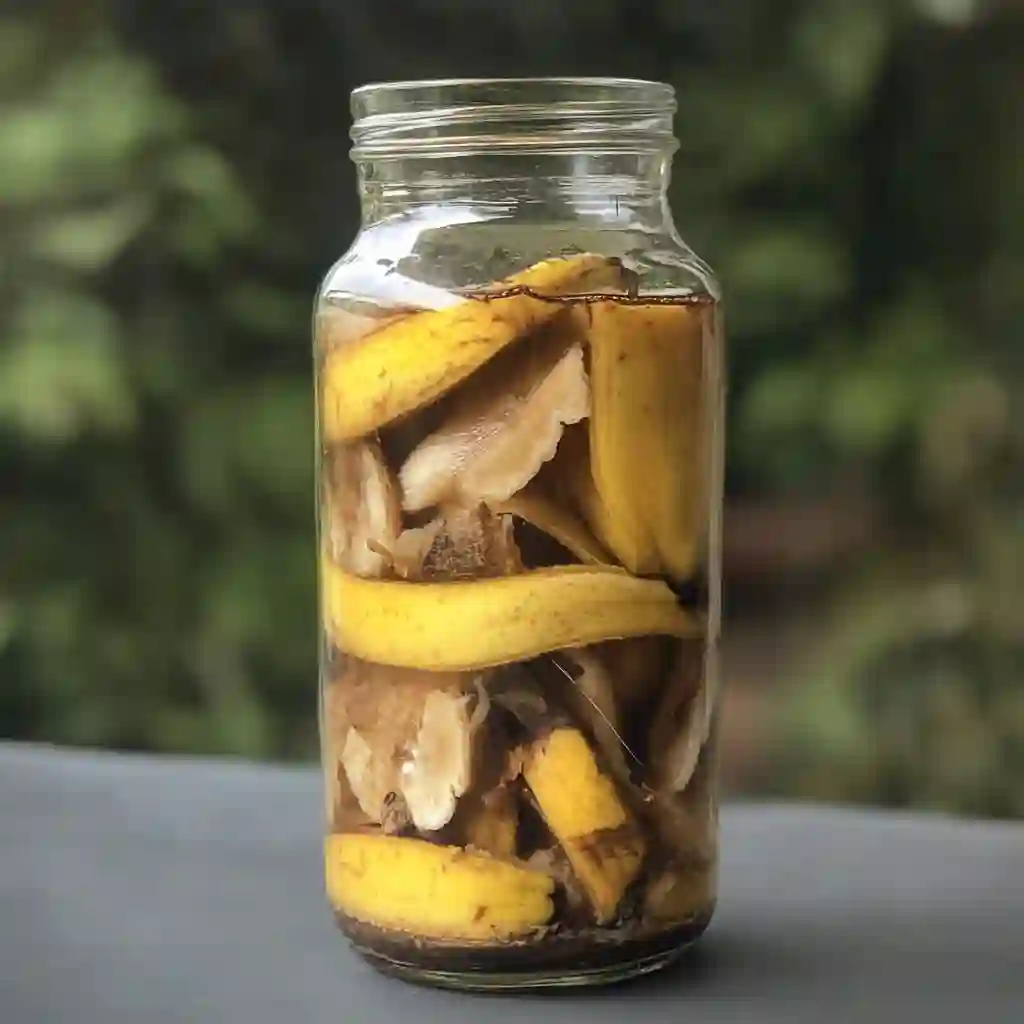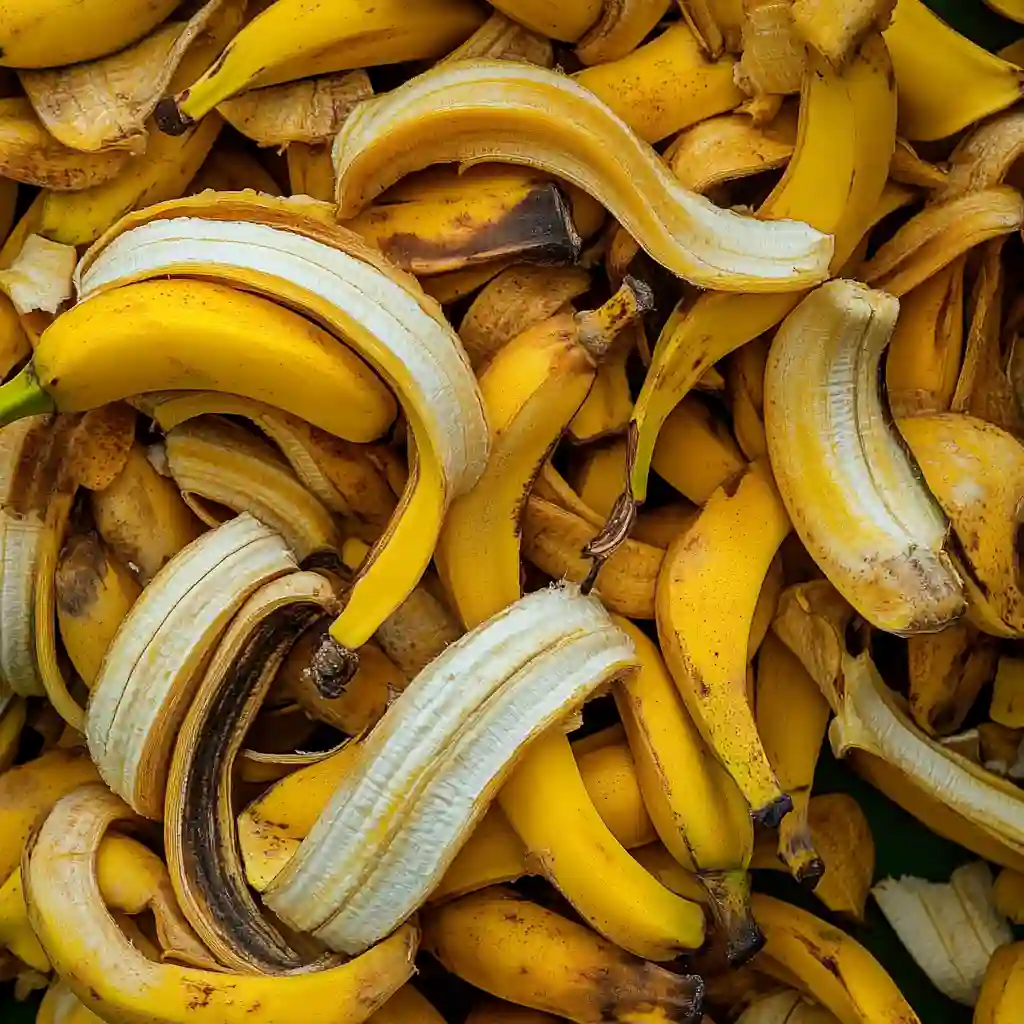If you’ve been tossing your banana peels into the trash, it’s time to rethink your habits. These everyday kitchen scraps are actually packed with powerful nutrients that can give your garden a serious boost — and using them is free, simple, and eco-friendly.
Whether you’re growing lush veggies, vibrant flowers, or indoor houseplants, banana peels can improve plant health, ward off pests, and even enrich your soil long-term. From banana peel tea to DIY fertilizers and natural insect traps, the possibilities might surprise you.
In this article, we’ll explore 8 effective ways to use banana peels in the garden, helping you cut waste while feeding your plants naturally.
Quick Facts & Nutritional Benefits of Banana Peels in the Garden
Before we jump into the how-to methods, let’s talk about why banana peels are such a powerful garden ally. While most of the fruit’s sugar and softness get eaten, the peel is still packed with essential plant nutrients that help boost root development, flowering, and fruit production.
🌱 Nutrients Found in Banana Peels:
- Potassium (K) – Vital for overall plant strength, root health, and resistance to disease.
- Phosphorus (P) – Encourages healthy root and flower growth.
- Calcium – Strengthens cell walls, helping plants grow strong stems.
- Magnesium – Essential for photosynthesis and deep green foliage.
- Sulfur & Manganese – Support enzyme function and metabolic processes in plants.
- Trace Elements – Including iron, copper, and zinc, which improve soil fertility and plant resilience.
🍌 Fun Botanical Fact:
Banana plants (Musa spp.) aren’t actually trees — they’re the world’s largest herbaceous perennials. Their fruits and peels decompose quickly and cleanly, making them an ideal natural amendment for both indoor and outdoor gardens.
✅ Why Use Banana Peels Instead of Synthetic Fertilizers?
- They’re organic and chemical-free.
- They don’t risk over-fertilizing your soil.
- You reduce household waste while nurturing your plants.
- They encourage beneficial microbial activity in the soil.
Banana peels work with nature — not against it — to create a healthier, more sustainable garden environment.
8 Practical Ways to Use Banana Peels in the Garden
Now that you know banana peels are nutrient-rich and garden-friendly, here’s how to turn them into effective tools for plant health and soil enrichment. These are all easy to try, and most can be done with items you already have at home.
1. 🍌 Banana Peel Tea
Best for: Quick plant pick-me-up (especially for container plants or herbs)
How to make it:
- Place one banana peel in a mason jar or pitcher.
- Fill it with water and let it steep for 24–48 hours.
- Use the water to feed your plants at the base.
This tea infuses the water with potassium and phosphorus — perfect for flowering or fruiting plants.
2. ✂️ Chop and Bury Banana Peels
Best for: New garden beds, potted plants, seed starts
Instructions:
- Cut peels into small pieces (around 1/4 inch).
- Mix into the soil around plant roots or directly under seeds.
Chopping increases surface area, speeding up decomposition and nutrient release.
3. ♻️ Compost Them
Best for: Long-term soil improvement
Banana peels are a green (nitrogen-rich) ingredient, ideal for compost piles or bins.
Tips:
- Balance with dry browns like leaves or cardboard.
- Avoid adding too many at once (can cause odor or fruit flies).
4. ☀️ Dry and Grind for Fertilizer
Best for: Boosting individual plants or making DIY fertilizer blends
How-to:
- Dry peels in the sun or oven at low heat.
- Grind into powder using a food processor or mortar and pestle.
- Sprinkle around your plants or blend into soil.
This powder is a compact, shelf-stable soil booster!
5. 🌿 Bury Whole Peels
Best for: Deep-feeding large plants (tomatoes, roses, shrubs)
Dig a trench 4–6 inches deep, place the banana peel flat, and cover with soil before planting nearby. As it breaks down, it provides a slow-release nutrient source directly at the root level.
6. 💧 Banana Peel Fertilizer Spray
Best for: Foliar feeding and quick vitamin boosts
DIY Mix:
- 1 banana peel
- Crushed eggshells (calcium)
- 1 tbsp Epsom salt (magnesium)
- 2 cups water
Blend and strain into a spray bottle.
Mist leaves and soil — great for tomatoes, peppers, and even houseplants.
7. 🪰 DIY Insect Trap
Best for: Controlling fruit flies and gnats
Instructions:
- Combine chopped banana peel and a splash of apple cider vinegar in a lidded container.
- Poke small holes in the top.
Insects crawl in for the sweet smell and can’t escape. It’s natural, non-toxic pest control!
8. 🍷 Make Banana Vinegar (for Acid-Loving Plants)
Best for: Blueberries, hydrangeas, rhododendrons
Steps:
- Chop 1–2 banana peels and add to a jar with water and a spoon of sugar.
- Cover with cloth and ferment for 2–3 weeks, then strain.
The result is a gentle, pH-lowering liquid your acid-loving plants will thrive on.
Each of these banana peel methods offers an eco-friendly way to repurpose waste and boost your garden — without spending a cent.
Bonus Tips, Common Mistakes & FAQs
Now that you’re stocked with banana peel gardening methods, let’s cover a few pro tips, common slip-ups to avoid, and frequently asked questions. These will help you get the most out of every peel.

🌟 Bonus Tips for Using Banana Peels in the Garden
- Pair with coffee grounds: Mixing chopped banana peels with used coffee grounds adds nitrogen to balance the potassium, creating a more complete fertilizer.
- Use for seedlings: Add a tiny bit of banana peel powder to seed-starting mix for early root development.
- Layer in raised beds: When building lasagna-style beds or hugelkultur mounds, banana peels make a great green layer.
- Great for compost tea too: Add banana peels to your aerated compost tea brews for a richer nutrient profile.
⚠️ Common Mistakes to Avoid
- Using too many peels at once
Overloading your soil with peels (especially whole) can lead to slow breakdown, fruit fly issues, or temporary nitrogen imbalance. Use moderately and chop or dry when possible. - Leaving peels exposed
Exposed peels attract pests. Always bury, mulch over, or compost peels rather than leaving them on the surface. - Assuming it’s a complete fertilizer
While rich in potassium and phosphorus, banana peels lack nitrogen. Combine with other compost materials or sources like grass clippings, coffee grounds, or fish emulsion for full-spectrum nutrition.
❓ Frequently Asked Questions (FAQs)
Q: Can banana peels be used on indoor plants?
A: Yes! Banana peel tea or fertilizer spray is excellent for houseplants. Just avoid burying raw peels in pots — they can rot and smell in enclosed spaces.
Q: How long do peels take to decompose in soil?
A: Small pieces break down in 1–2 weeks, whole peels may take a month or more depending on temperature, moisture, and soil activity.
Q: Do banana peels attract pests or rodents?
A: If buried properly or composted with balance, they don’t. But whole or surface-placed peels can attract flies or critters — always bury or mix well into compost.
Q: Can I freeze banana peels for later use?
A: Absolutely. Just toss them in a freezer-safe bag and use later in teas, compost, or for grinding into powder.
Q: Are store-bought (non-organic) banana peels safe to use?
A: Yes, but rinse them well to remove potential pesticide residues before applying to your garden.
These extra tips will help you get more value from banana peels while keeping your garden healthy, balanced, and pest-free.
Conclusion
Banana peels are more than just scraps — they’re an underrated superfood for your garden. From homemade fertilizers and teas to pest control and soil amendments, there are countless ways to reuse what you once threw away. Whether you’re a seasoned gardener or just starting out, these methods are simple, natural, and sustainable.
By integrating banana peels into your gardening routine, you’re not just helping your plants thrive — you’re reducing household waste and relying less on synthetic chemicals. It’s a small change with big benefits for your garden, your wallet, and the planet.


